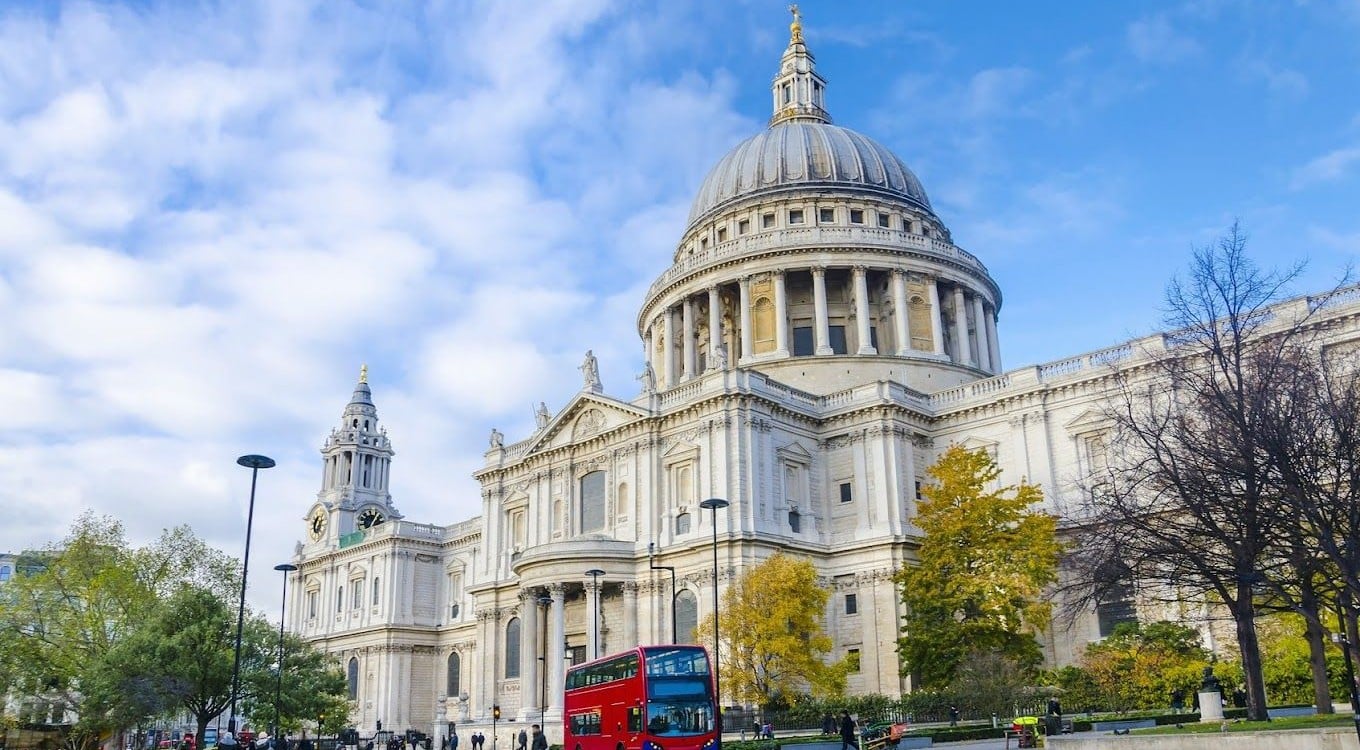Europe continues to be a very popular destination. In 2024, travel returned to pre-pandemic levels with over 40 million Americans visiting the United Kingdom, France, Italy, and other destinations. Christians have the opportunity to not only enjoy the stunning cities, history, cuisine and culture of Europe, but also to visit places that will deepen their faith and understanding of the impact of Christianity.
As author Irving Hexham explains, “The legacy of the Christian faith takes on immediacy and impact as you see firsthand the places where believers through the centuries lived and died, shaping the world with their faith.”
Wartburg Castle, Eisenach
Wartburg Castle is on a hilltop just outside the town of Eisenach in Germany, also known for its connections with the Bach family. Luther spent a few weeks in hiding, protected by Frederick III of Saxony, and used that time to translate the New Testament and Psalms into German from Erasmus’ original Greek. He considered Scripture to be “words of life, intended not for speculation and fancy, but for life and action.” Luther had grown up knowing Upper German and Low German and was able to translate the Bible into understandable, everyday language, which was key in the standardization of modern German.
St. Paul’s Cathedral, London
St. Paul’s Cathedral was completed in 1710 by Sir Christopher Wren, after the previous cathedral was destroyed by the Great Fire of London. This iconic landmark has hosted many prestigious ceremonies and events. Behind St. Paul’s is St. Paul’s Cross, which now has a statue of Wesley, who was influenced by the open-air preachers at the site. This was also the location where the Bishop of London burned copies of Tyndale’s New Testament. Today, St. Paul’s library has one of only three remaining copies of the 1526 Worms edition of Tyndale’s New Testament.
The Reformation Museum, Geneva
Founded in 2005, the Reformation Museum in the historic district of Geneva traces the history of the Reformation from 1536 to the present with rare documents, writings, books, and paintings that give deep insight into the thoughts and actions that drove the movement. John Calvin, the 16th century Reformer, was based in Geneva from 1536 to 1564. St. Peter’s Cathedral is next door and has a gorgeous chapel. The Auditoire de Calvin, now used by the Church of Scotland, was where Calvin and others regularly preached and taught the Protestant refugees.
The Round Church, Cambridge
The Round Church is in central Cambridge and was modelled on the Church of the Holy Sepulchre in Jerusalem. It’s stood as a witness to the Christian faith for nearly 900 years of Cambridge history. The church houses an excellent exhibition about the dynamic influence of Christianity, which is further explored in their documentary, “Saints & Scholars.” The church also offers guided tours around Cambridge.
George Müller Museum, Bristol
George Müller is an excellent example of a changed life. Although initially reckless and dishonest, he encountered Jesus at the Bible study and dedicated his life to trusting God for finances on behalf of the underprivileged. Driven by compassion for orphaned children, he established the Scriptural Knowledge Institution for Home and Abroad, ultimately taking care of over 10,000 orphans. The museum is housed in one of the original orphanages.
Bishop Auckland Palace and Faith Museum, near Durham
The Palace of Bishop Auckland and the Faith Museum are located on the outskirts of Durham. Auckland Castle has one of the best-preserved Bishop’s palaces in the whole of Europe, dating back to the time of the Norman Conquest. The Palace was restored in 2019 and now features a newly-opened Faith Museum, as well as a large private chapel, the Throne Room, a series of paintings by Zurbarán and unique exhibits about the power, wealth, and influence of the Bishop Princes.
Carey Baptist Church, Moulton
William Carey, the father of the modern missionary movement, came to the small town of Moulton in 1784. Originally a shoemaker, he pastored the Baptist Church from 1786 until he moved to Leicester in 1789. He went on to help found the Baptist Missionary Society, then traveled to India, where he remained until his death. He’s known for saying, “Expect great things from God and attempt great things for God.” Over a 30-year period, he and his colleagues translated the Bible into eight languages and the New Testament into 27 languages, printing gospel materials in 40 languages. His writings helped form the formation of missionary societies in Britain and America.
St. Giles Cathedral, Edinburgh
St. Giles Cathedral plays an immense role in Reformation history. In 1560, Scotland officially embraced Protestantism, passing legislation abolishing the pope’s authority over the country and embracing the ideas of Martin Luther. Noted Reformer John Knox was the first elected minister of St. Giles after the Reformation Parliament took over. After you tour the Cathedral, you can visit the John Knox House, also on the Royal Mile. Although he only stayed in this medieval home briefly, it was saved from demolition and is now a fascinating museum.
Gutenberg Museum, Mainz
If you’ve ever wondered what an original Gutenberg Bible looked like, you can see one—along with a replica of Gutenberg’s original workshop—at the Gutenberg Museum in Mainz, known as the “World Museum of the Printing Arts.” Gutenberg’s printing press made it possible for Luther, Zwingli, and Calvin to share the Reformation message with the world.
Hus Memorial, Constance
On in the Bavarian town of Constance, in 1415, Jan Hus was tried by the Council of Constance with Hieronymus of Prague and branded an arch-heretic. After a dunce cap was placed on his head, he replied, “Most joyfully will I wear this cross of shame for thy sake, O Jesus, who for me did wear a crown of thorns.”
He was burned at the stake on July 6, 1415, with Wycliffe Bibles as kindling for the fire. His last words were, “In 100 years, God will raise up a man whose calls for reform cannot be suppressed.” In 1517, almost exactly 100 years later, Martin Luther would nail his “95 Theses” to the castle door. There’s a monument that honors Hus’ life and legacy, as well as a museum in the town.
Rowena Drinkhouse, managing director of Reformation Tours, Ltd, has been designing Christian tours of Europe for over 30 years. Upcoming tours include Tyndale and the English Bible and the Presbyterian Heritage Tour of Scotland. Visit www.ReformationTours.com to see all their 2026 departures.






